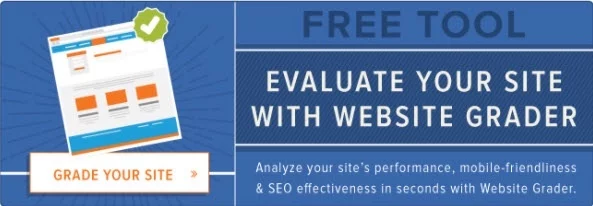Effective Website Architecture SEO for Growth
- Home
- Effective Website Architecture SEO for Growth
Picture this: you've built a visually stunning website, packed with valuable content that your target audience craves. Yet, despite your best efforts, it's struggling to rank on search engines.
The culprit? Poor Website Architecture SEO.
Creating an optimized website architecture is essential for both user experience and search engine optimization. By implementing effective Website Architecture SEO strategies, you'll not only enhance the usability of your site but also make it more accessible to search engine crawlers.
In this blog post, we'll delve into key aspects of creating an SEO-friendly site architecture - from planning your website's structure and conducting keyword research to optimizing descriptive URLs and implementing internal linking strategies. We will also discuss designing mobile-friendly websites using responsive design and submitting sitemap.xml files in Google Search Console.
Ready to transform your online presence through expertly crafted Website Architecture SEO? Let's dive in!
Table of Contents:
- Plan Your Website's Architecture: The Blueprint for Success
- Conduct Keyword Research: The Key to Unlocking Your Site's Potential
- Optimize Descriptive URLs for Better SEO Performance
- Implement Internal Linking Strategy: A Step-by-Step Guide
- Design Mobile-Friendly Websites Using Responsive Design
- Submit Your Sitemap.xml File in Google Search Console
- FAQs in Relation to Website Architecture Seo
- Conclusion
Plan Your Website's Architecture: The Blueprint for Success

Alright, let's get started.
Before you dive headfirst into creating your website, it's essential to have a solid plan in place - we're talking about your site's architecture.
Think of it as a roadmap to help you craft an orderly and user-friendly web presence.
Visualizing Your Site Structure
A picture speaks a thousand words; hence using visual aids can make planning so much easier. Tools like flowcharts or mind maps are great tools to help you create a clear view of your site's structure.
This exercise will not only help you identify gaps in content but also ensure each page serves a specific purpose, ultimately leading to an organized website that both users and search engines love.
A Few Tips for Success
- Keep it simple - don't overcomplicate things with too many pages or complex navigation;
- Create logical categories and subcategories within your site's architecture;
- Avoid using jargon or industry-specific terms in your navigation menu - make it accessible for everyone;
Eager to learn more about optimizing your website? Dive into this comprehensive guide by Moz.
Now that we've laid the foundation, let's move on to other crucial aspects of creating an SEO-friendly website. Stay tuned.
Conduct Keyword Research: The Key to Unlocking Your Site's Potential
To optimize your website's architecture for SEO, you need a secret weapon - keyword research. Don't be intimidated; keyword research doesn't have to be difficult.
If you want to create a site structure that search engines will love, you need to understand what site architecture means. In simple terms, it refers to the way your website's content is organized and presented to users. A good site architecture means that search engines can easily crawl and index your site's content, which can help improve your search engine rankings.
One of the most important aspects of site architecture is the website’s structure. This includes the site hierarchy, site navigation, and URL structure. A logical URL structure can give search engines a clear idea of what your individual web pages are about, making it easier for them to crawl and index your site's content.
Internal links are also an important part of your site's structure. They help search engines crawl and index your site's content, and they also help users navigate your site. Make sure your navigation menu is easy to use and that your high-level category pages are linked to from your homepage.
When it comes to individual pages, make sure they are optimized for SEO. This includes using an SEO-friendly URL structure, including relevant keywords in your page titles and meta descriptions, and using header tags to structure your content.
Another important aspect of site architecture is the site's content. Make sure your content is well-organized and easy to navigate. Use topic clusters and main categories to group related pages together, and make sure your top priority pages (such as product pages) are easy to find.
Finally, make sure you have an HTML sitemap and an XML sitemap. An HTML sitemap can help users navigate your site, while an XML sitemap can help search engines crawl and index your site's content.
Remember, a poor site structure can hurt your SEO efforts. If search engines can't crawl and index your site's content, it will be difficult for your site to rank well in search results. So, take the time to create a site structure that is optimized for both search engines and user experience.
Need more guidance on keyword research? Check out this comprehensive guide from Backlinko.
So, there you have it. By following these tips, you can create an SEO-friendly site architecture that will help your site rank higher in search results and provide a better user experience for your visitors.
Optimize Descriptive URLs for Better SEO Performance

When it comes to optimizing your website's architecture for search engines, one crucial aspect is often overlooked: descriptive URLs.
But worry not. I'm here to guide you through the process of creating top-notch URLs that will make both users and search engines happy.
Create Clear and Concise URLs with Targeted Keywords
The first step in crafting an effective URL is keeping it clear and concise.
No more cryptic codes or meaningless numbers - we're aiming for simplicity here.
Use targeted keywords within your URL structure, which helps improve visibility in search results while also making them easier for users to understand at a glance.
Avoid Using Generic Names or Numbers in URL Structures
Moving on from keyword usage, let's talk about what NOT to include in your URLs.
Avoid generic names like "page1" or "post123," as they provide no context whatsoever regarding the content of the page itself. Instead, aim for meaningful terms that accurately describe each page's content.
- Keep it short and sweet: Shorter URLs are generally more user-friendly and memorable than their lengthy counterparts. Aim for around 50-60 characters max whenever possible (Search Engine Journal agrees).
Now that we've covered the basics, let's dive into some actionable steps you can take to optimize your URLs:
- Review existing URLs: Take a look at your current website structure and identify any URLs that could benefit from optimization. This may include updating generic names or incorporating relevant keywords.
- Create a URL naming convention: Establish a consistent approach for creating new URLs moving forward. This will help maintain an organized site architecture while also ensuring each URL is optimized for search engines.
- Audit regularly: As with any aspect of SEO, it's essential to keep an eye on your progress and make adjustments as needed. Regularly review your site's performance in search results and update URLs accordingly if necessary.
Incorporating these tips into your website strategy will not only improve user experience but also boost visibility in search engine rankings - a win-win situation.
No more guesswork; now you have all the tools required to create descriptive, SEO-friendly URLs like a pro. Happy optimizing.
Crafting descriptive URLs with targeted keywords and avoiding generic names or numbers is crucial for optimizing your website's architecture for search engines. Keeping URLs clear, concise, and short while establishing a consistent naming convention and regularly auditing them can improve user experience and boost visibility in search engine rankings. With these tips, you'll be able to create SEO-friendly URLs like a pro.
Implement Internal Linking Strategy: A Step-by-Step Guide

Alright, let's dive in. Internal linking is a game-changer for both user experience and SEO performance. To make the most of it, follow this simple yet effective step-by-step guide:
Connect Related Pages with Contextual Anchor Text Links
Firstly, identify related content pieces on your website. The goal here is to create meaningful connections between them using contextual anchor text links. According to Moz, these links help search engines understand the relationship between pages and improve your site's ranking potential.
Employ Breadcrumbs for Improved Navigation
Breadcrumbs are another powerful tool in your internal linking arsenal. Their importance in enhancing navigation and providing an additional layer of organization within your site architecture is highlighted by Yoast.
Create Your Internal Linking Plan:
- Analyze existing content on your website to find relevant connections.
- Add contextual anchor text links that accurately describe the linked page.
- Incorporate breadcrumbs into each page's design for seamless navigation.
- Audit regularly to ensure all internal links remain functional and relevant over time.
By following this guide, you'll create a well-structured website that delights both users and search engines alike.
Want to learn more about internal linking best practices? Dive into Ahrefs' comprehensive guide here.
Now that you've mastered the art of internal linking, it's time to move on to other essential aspects of your site architecture plan. Buckle up for an exciting journey towards a high-performing, SEO-friendly website.
Design Mobile-Friendly Websites Using Responsive Design
 Alright, let's talk mobile.
Alright, let's talk mobile.
In this rapidly evolving digital age, having a website that works on mobile devices is not just recommended - it's mandatory.
So, how do you ensure your site looks great and performs well on all devices?
The answer: responsive design.
Ensure Seamless Navigation and Readability on Different Devices
First things first - navigation and readability are key for user experience.
A responsive design automatically adjusts the layout of your website to fit any screen size or device orientation.
This means that whether someone is browsing on their smartphone, tablet, or desktop computer, they'll have a seamless experience navigating through your content.
Prioritize Page Load Speed Optimization for Mobile Users
No one likes waiting around for pages to load - especially not mobile users with limited data plans.
To keep them engaged (and prevent high bounce rates), make sure your site loads quickly by optimizing images, minimizing JavaScript files, and using efficient caching techniques.
- Use Google PageSpeed Insights to identify areas for improvement.
- Aim for a page load time of under 3 seconds on mobile devices.
- Optimize your images without sacrificing quality by compressing them or using next-gen formats like WebP.
Incorporating responsive design into your website's architecture not only improves user experience but also helps boost your search engine rankings - it's a win-win.
Eager to learn more about creating an SEO-friendly, mobile-responsive site? Check out this comprehensive guide from Moz on how to conduct a Mobile Site Audit here.
To sum up: prioritize responsive design in your website architecture and watch as both users and search engines reward you with better engagement and higher rankings.
Submit Your Sitemap.xml File in Google Search Console
Let's talk about sitemaps. A sitemap.xml file is like a roadmap for search engines such as Google. It helps them navigate through all the pages on your site and index each one accordingly. In other words, it plays a crucial role in boosting your online visibility.
Create an Accurate and Up-to-Date Sitemap.xml File
Creating a sitemap with all website pages is essential for online visibility, and fortunately, there are tools to help do so quickly. Fortunately, generating the file is made easy with a variety of tools accessible to those without coding experience. Some of the popular ones include:
- Screaming Frog XML Sitemap Generator
- XML-Sitemaps.com Online Generator
- Google XML Sitemaps WordPress Plugin
Monitor Indexing Status and Address Any Issues Promptly

Maintaining an up-to-date sitemap is essential for keeping search engines informed about new content or changes made to existing pages on your site. This means regularly checking its indexing status within Google Search Console (GSC). If you haven't already, sign up for a GSC account and verify your website ownership.
Submit Your Sitemap.xml File to Google Search Console
Once you've created your sitemap.xml file and established a GSC account, it's time to submit the document. Follow these simple steps:
- Login to your Google Search Console account.
- Select the property (website) that corresponds with the sitemap you want to submit.
- In the left-hand menu, click on "Sitemaps."
- Type in or paste the URL of your sitemap.xml file into the "Add a new sitemap" field. Make sure it ends with "/sitemap.xml".
- Click "Submit," and voilà . You're all set.
Congratulations. By submitting your sitemap.xml file within Google Search Console, you've taken an essential step towards improving search engine visibility for every page on your site. Maintain regular check-ins with GSC, address any issues promptly, and watch as those organic rankings soar.
Submitting a sitemap.xml file to Google Search Console is crucial for boosting online visibility. Creating an accurate and up-to-date sitemap using tools like Screaming Frog XML Sitemap Generator or the Google XML Sitemaps WordPress Plugin can help search engines navigate through all pages on your site, while regularly monitoring its indexing status within GSC helps maintain it.
FAQs in Relation to Website Architecture Seo
What is website architecture in SEO?
Website architecture in SEO refers to the organization and structure of a site's pages, ensuring they are logically connected and easily navigable. A well-planned architecture improves user experience, facilitates search engine crawling, and enhances indexing efficiency.
What website architecture is best for SEO?
The best website architecture for SEO consists of a clear hierarchy with limited depth (2-4 clicks from the homepage), organized content using categories and subcategories, descriptive URLs containing targeted keywords, internal linking strategies connecting related pages, mobile-friendly design with responsive layouts, and an accurate sitemap.xml file submitted to Google Search Console.
Why is site architecture important for SEO?
Site architecture plays a crucial role in SEO as it impacts user experience by providing easy navigation. It also allows search engines to crawl and index your content efficiently. Properly structured websites improve keyword relevancy through strategic placement within URLs or headings while facilitating link equity distribution across interconnected pages.
Does website structure affect SEO?
Yes, website structure affects SEO because it influences how users navigate your site and how search engines crawl its content. A well-structured site ensures efficient crawling by search engine bots leading to better indexing while improving user experience through seamless navigation which ultimately contributes positively towards organic rankings on SERPs (Search Engine Results Pages).
Conclusion
Website architecture is a crucial aspect of SEO that can significantly impact your site's search engine ranking. To improve your site's user experience and increase traffic, it's important to identify common pages, conduct keyword research, optimize descriptive URLs, implement an internal linking strategy, and design mobile-friendly websites using responsive design.
At Whitehat, we specialize in helping small businesses achieve their growth targets through effective website architecture and SEO strategies. Our target buyer persona is the head of marketing for a small company with £8M annual revenue and limited internal resources. We provide guidance on strategy and methodology to help your company succeed. Contact us today to learn more!


